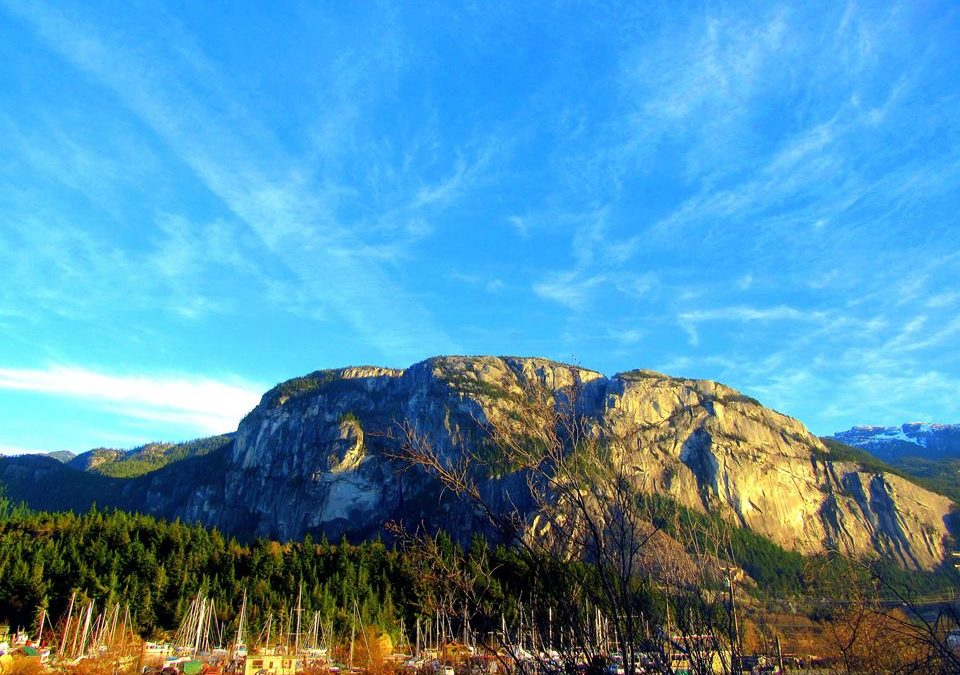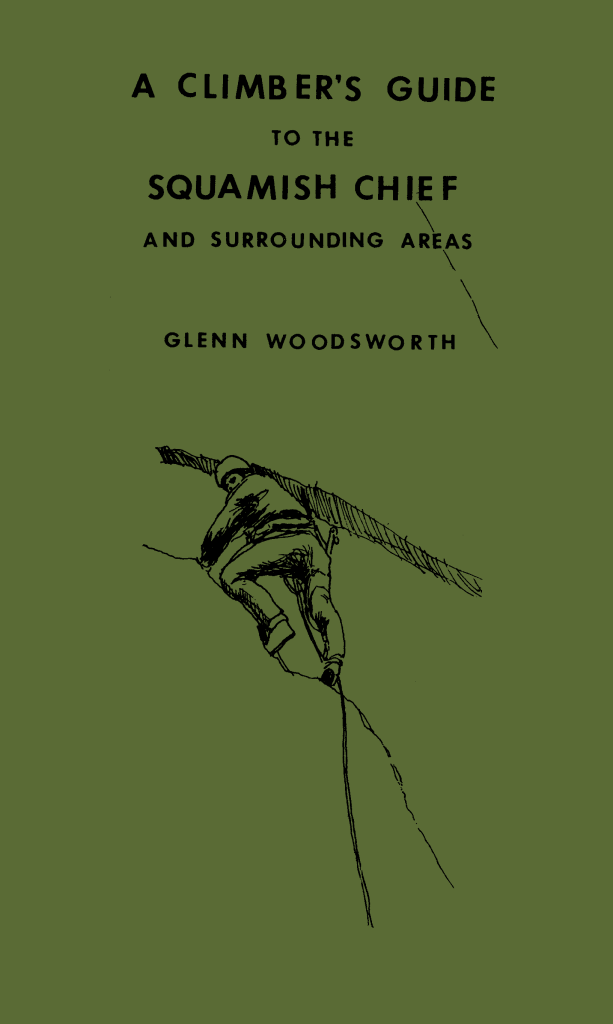Squamish’s Original Guidebook Now Online

The first climbing guide to Squamish was published in 1967. The University of British Columbia’s Varsity Outdoor Club (VOC) has recently digitized it for everyone to enjoy.
Artem Babaian is the secretary of the VOC. He was recently involved in a project to digitize the original climber’s guide to Squamish from 1967 and make it available for free online.
The 1967 A Climber’s Guide to the Squamish Chief and Surrounding Areas
“It’s a really interesting little piece of Squamish history and totally accessible,” said Babaian. “I was thinking some of your readers, especially those interested in the history of climbing, would love to check it out.”
The VOC is celebrating it’s 100 year anniversary in 2017 and they’re looking to get in contact with alumni across Canada and the world.
Babaian said, “If you or someone you know was in the VOC and are interested in organizing or participating in the centennial celebration email info@ubc-voc.com and we’ll get the ball rolling.”

A Climber’s Guide to The Chief
By Glenn Woodsworth in November 2014
A Climber’s Guide to the Squamish Chief and Surrounding Areas was published in 1967 and was the first published, stand-alone guide to Squamish climbing. In 1967, climbing there was barely a decade old and there were fewer than 100 routes. Since then, at least 15 substantial guides covering thousands of routes just at Squamish have appeared. Today this 1967 guide is of historical interest only and has become quite scarce. The route details may be obsolete, but the comments on retro-bolting and cleaning show that these issues, hot topics of discussion today, have been around a long time.
Nobody knows when recreational rock climbing began at Squamish, but the first recorded ascents were made in 1957 and 1958. With the opening of the highway from Horseshoe Bay to Squamish in 1958, the number of climbers increased steadily. By 1961, perhaps a dozen climbers were active at Squamish. That summer, two young climbers, Jim Baldwin from Prince Rupert and Ed Cooper from Seattle, made what Anders Ourom called “the great leap upward.” Their ascent of the Grand Wall made the national newspapers and television and attracted even more climbers.
In 1963, Baldwin compiled the first guide to the area, A Climber’s Guide to the Squamish Chief Area. This was hand written and later typed for publication, but Jim’s death in Yosemite in June 1964 meant that the guide was never published. A few statistics: the guide lists 21 routes, including two on the Papoose and four at Murrin Park and Nightmare Rock. Although about 20 people are credited with at least one first ascent (including half a dozen from the VOC), the lion’s share (nine routes) went to Jim Baldwin.
Coast Mountains legend Dick Culbert made the first ascent of the North Gully in 1958 with others, including Baldwin. Like many of the Squamish climbers of the day, Dick was predominantly a mountaineer and not a rock climber, although he has a number of good first ascents at Squamish to his credit. For years he had been researching for his remarkable A Climber’s Guide to the Coastal Ranges of British Columbia, published by the Alpine Club of Canada in 1965. Of course, the book had to have a section on Squamish. I had climbed there extensively and had been assisting Dick with his guide, so I wrote the first draft of the Squamish section. It described about 28 routes and drew heavily on Baldwin’s guide, with updates through 1964. Two drawings by Arnold Shives, also a mountaineer and Squamish climber, were included.
In 1966 and 1967, there was an explosion in the number of new routes and the number of active climbers (many affiliated with the VOC). Some of the routes from those years might still be among the best at Squamish: Hairpin, Tantalus Wall, Yosemite Pinnacle Left Side, University Wall, Exasperator, Banana Peel, Calculus Crack, and Pipeline. It was time for Squamish to have its own, stand-alone, rock climbing guide. I had been active at Squamish since 1961, although I was never one of the strongest climbers. I knew that my best days there were about finished, and I thought that a guidebook would be a good end to my serious rock climbing career.
During the fall of 1966 I marked some of the trails to the base of routes on the Apron, particularly to Slab Alley, Diedre, and Snake. That fall, a few Mountain Rescue Group or Mountain Access Committee and VOC work parties helped rough out the trails and flag a few more. I wrote the text of the guide during the spring of 1967, banging it out on, if I remember correctly, the same portable, manual typewriter that Dick had used for his guide. Irene Wilson, a secretary at the office where I worked and definitely not a climber, kindly re-typed it on an IBM Selectric typewriter, which gave a more uniform ink density on the page (but the broken letters, especially the “p,” were a serious defect). I asked Tim Auger, one of the best and most active climbers, to do some illustrations from photos. The book was crudely printed and bound at a local quick-print shop near the Granville bridge: not a great job, but it worked. For the cover, I chose an olive-green stock to reflect the abundant moss and vegetation found on many of the routes.
I was very active in the BCMC and wanted them to publish it, but they had no money for such a venture. Luckily for my personal finances, the VOC agreed to contribute $300 to the printing cost. This was just enough to produce 300 copies. $300 and 300 copies seemed like huge amounts at the time, and nobody knew how many copies might sell (there might have been fewer than 50 active climbers at Squamish at that time, and most of us knew one another). The book came out in late spring and was priced at $1.50. To my surprise, it sold out within a year; and the meager profits went to the VOC, as the club and I had agreed.
The book was criticized by visitors for what was perceived to be a deliberate under-grading of many of the routes. The grades were indeed low. Examples include class 5.4 for Diedre (5.8 today), 5.6 for Snake (5.9 today). This sandbagging wasn’t deliberate. In part it was a hold-over from the grades that Jim Baldwin – who had climbed in Yosemite, unlike me – and in part it arose from a feeling of inferiority common among local climbers of the day. They didn’t believe that they were good enough to climb 5.9, let alone 5.10, but they were. Several routes in the 1967 guide, notably the left side of Yosemite Pinnacle, were undoubtedly 5.10. The grades were finally rationalized in the guides that appeared in the 1970s, and some people now say that modern grades are a bit soft.
For aid routes, Jim Baldwin’s guides used the class 6 system, breaking the difficulty down from 6.0 to 6.9 and giving examples from Yosemite. When I wrote the Squamish section for Culbert’s 1965 guide, I kept, for the most part, Baldwin’s grades, both free and aid. I was always uncomfortable with the 6.x system, because I thought that all we needed was 3 grades: easy, moderate, and hard, with maybe another for desperate. The 6.x system had too many increments with no clear way of distinguishing, say, a 6.3 from 6.4.
For the 1967 guide, I switched from the class 6 system the newer A1 to A5, probably because the 1964 Roper guide to Yosemite and 1965 Beckey and Bjornstad guide to Leavenworth used the new system. I had not climbed in Yosemite, but I had done much at Leavenworth, and I was thoroughly familiar and comfortable with Beckey’s system. As an aside, I was also never very happy with the Yosemite decimal system system at the lower grades: I didn’t know (and still don’t) how to tell, for example, 5.2 from 5.3.
Somehow I missed a few routes. I had intended to produce a revised guide, incorporating them and routes new since publication. But it never happened. By 1970 I had two young children and was in graduate school in the eastern United States. By the time I returned to Vancouver in 1974, the next generation of rock climbers had far surpassed what my generation had achieved. New guidebooks were soon to be published, but their story is for another person to tell.



